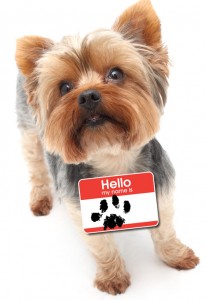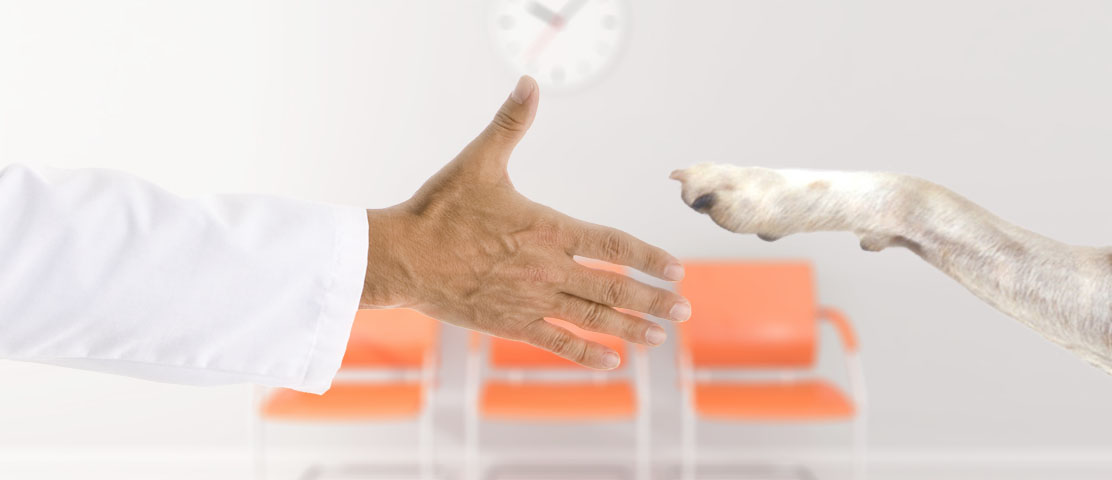Many people share their lives with a dog or cat who thinks the vet is an evil overlord and groomers are Satan’s henchmen. The good news is that it’s possible to prevent, manage and, in some cases, reverse these unhappy feelings with some time and effort. Accustoming your pet to handling and the sights, sounds and smells of the grooming salon and vet clinic will greatly reduce your pet’s stress when they actually go into these places for an appointment.
Fear is learned through the unfamiliar and the unpleasant
Dogs and cats aren’t born hating particular people or places. Usually two things need to happen before your pet decides that its groomer and veterinarian are The Evil Empire. The first is unfamiliarity and the second is unpleasant experiences.
Like people, pets cling to the familiar and reject the unknown. A strange place with strange noises and smells can make pets nervous and defensive. Add to that an unpleasant experience and you have a recipe for an unhappy cat or dog.
A dog visiting the groomer for the first time doesn’t realize that the clippers are only there to remove hair, not body parts. If the only experience a puppy or kitten gets at the clinic is a needle in the posterior, of course the vet isn’t going to be high on their Christmas card list.
Teach your pet to be handled
In order to deal with fear of vets or groomers, the first thing you need to do is accustom your dog or cat to being handled. Associate handling with pleasant experiences, like food or toys or anything that your pet thinks is grade-A awesome. You want those good feelings to be triggered when your pet is touched or controlled by a human’s hands.
Handling isn’t just petting. Pets should be accustomed to having the following touched, manipulated, etc.:
- Mouth (show teeth, open)
- Ears (look inside)
- Eyes
- Nose
- Feet
- Tail
- Unmentionables
A note about the unmentionables: It may sound gross, but when it comes time when the vet or groomer needs to handle the parts that are normally excluded from polite conversation, a pet who is used to it is a lot easier to deal with.
Start at home. If your pet gets used to you checking their paws just before they have dinner, they soon begin to view paw handling as a matter of course. Then, when the groomer goes for the nail clippers, their first impulse is to look for their reward.

Visiting the Vet Can Be Fun!
The second thing you need to do to prevent pet fear is to associate the vet and groomer with positive experiences. If you take Fluffy and Rover to the vet clinic and groomer five or ten times and only one of those results in a bath or a set of shots, chances are that they will be much less apprehensive about visiting. Break out the liver or the cheese or the ball or the chew toy. Whatever it takes to get your pet happily distracted – use it.
Obviously, this requires some cooperation from your vet and groomer. Talk to them. Tell them that you want your pet to associate their business with positive experiences and you will take up minimal time. If you are positive and friendly, many animal professionals will go out of their way to try and accommodate you.
Think long-term
Associating the vet and groomer with positive experiences is a long-term plan, not a quick fix. With a pet that is already afraid, start at the edge of their fear – where they start fussing – and gradually increase their boundaries. Fearful pets should never be punished for being afraid; they will simply become more fearful. Focus on the positive and lavishly reward positive behavior. If you feel you need more help, seek out a positive-focused trainer who understands the value of slowly opening up the world to your pet.
A fearful pet is one who is in pain. By eliminating that pain, you are giving an amazing gift to your pet. Cats and dogs exist in the now; taking away their fear of routine vet and groomer visits make their ‘now’ a happy experience instead of a scary one.

